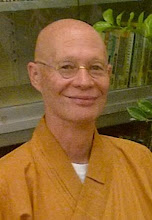There are many seminars, workshops and techniques about touting their benefits to bring us a happy life. Happiness seminars abound. While it is true that we live in very unhappy times and it seems quite reasonable to find ways to bring happiness into our societies I fear that the quick fix methods will only have superficial results at the least and at the most plunge people further into despair. I recently spoke to a gentleman who was on a quest to find happiness and had just attended his 20th workshop on happiness. He travels the width and breadth of the country in search of the magic formula. In a sense, he had become a happiness junkie getting on a high during a seminar then crashing down in a heap soon after with a happiness hangover. I would have found it quite amusing if it had not been for the look of utter despair on his face.
Many people are turning to Buddhism as a path to happiness. The Buddha has given us a path to supreme and abiding happiness in a well tried and tested method used by countless folk down through the last two millenniums. However, it seems that even many Buddhists are also living lives in quiet desperation almost like closet alcoholics who keep their bottle of misery in a brown paper bag except the brown paper bag is the façade of superficial contentment. The answer is not necessarily in more meditation, more retreats or more chanting because even these can be a way of avoiding confronting the root cause of all our unhappiness. After all, a good meditation, a quiet and relaxing retreat, uplifting chanting can bring calm and peace. . .for a while.
It was once said of the ancient Japanese Samurai that the battle was not fought or won on the battle field against the perceived enemy but rather in the Zen Do where battle was done with the real enemy lurking in the shadows of the mind. The Self.
This is the last of the attachments, well, it is the one we often want to deal with last! In the Four Noble Truths the Buddha shows us that our suffering, discontent or dissatisfaction are a result of attachment. The greatest of all these attachments is the attachment to the Self Cherishing part of us. It is no coincidence that as one enters a Chinese Buddhist Temple the first Hall contains the statue of what is popularly known as the “laughing Buddha” the Maitreya Bodhisattva symbolizing happiness and contentment. He is often flanked by fierce looking Dharma protectors wielding swords and spears – not the peaceful visage one would expect of a Buddhist temple. The symbols speak loudly. The Maitreya Bodhisattva speaks of happiness which is attainable through the Dharma and the swords that cut through delusion to the truth. It can also remind us that our battle begins with the ego, the cherishing self that will obscure our journey.
I am not immune from the shadow lurking ego. Not long ago I awoke to a beautiful day with sunshine and a blue sky. I thought to myself: “I am so happy this is a beautiful day.” Happy for whom? And if it were not a beautiful day? Would I feel sad? My ego had tricked me. Rather than embracing the gift of the day the ego wanted to get in on the act. Without the self cherishing part the day is beautiful because it simply is. And that is real happiness.
We often find the pursuit of happiness so difficult because the self-cherishing part has for so long deluded us that we can no longer recognize true happiness.
Why are the fierce looking Dharma protectors in the “first” hall and not in the other halls? It is because this is the first thing we must do battle with – our self-cherishing part. However so often we want to start our journey in the higher temple halls. The first hall seems a bitter pill to swallow.
So how do we start dealing with this ego? The Buddha has given us many expedients. Tonglen Meditation and Naikan are two such methods. Tonglen helps us develop a mind of selfless compassion and Naikan cracks the hard shell of the ego through introspection. Naikan forces us to look at life from a different angle and not from the usual perspective of the ego. Most often we look at life through the eyes of ego, what has given us happiness and contentment or what has brought us misery and dissatisfaction. Naikan helps us to look at reality not the assumed reality of the ego. Like an optometrist who prescribes a pair of glasses to correct our vision so that we may see clearly, Naikan through its three strategic questions, retrains us to see life from the angle of life’s gift and our obstruction to the gift of life.
Whatever method you use the real battle needs to be done in your own mind. Your external “enemies” are only reflections of your self, your self-cherishing self. Abiding happiness only comes through dealing with this inner enemy. The Maitreya Bodhisattva welcomes us with his happy smile and promise of enlightenment. We can be assured that this type of happiness will not leave us with a hangover but brings peace and life to all sentient beings.
Subscribe to:
Post Comments (Atom)




No comments:
Post a Comment